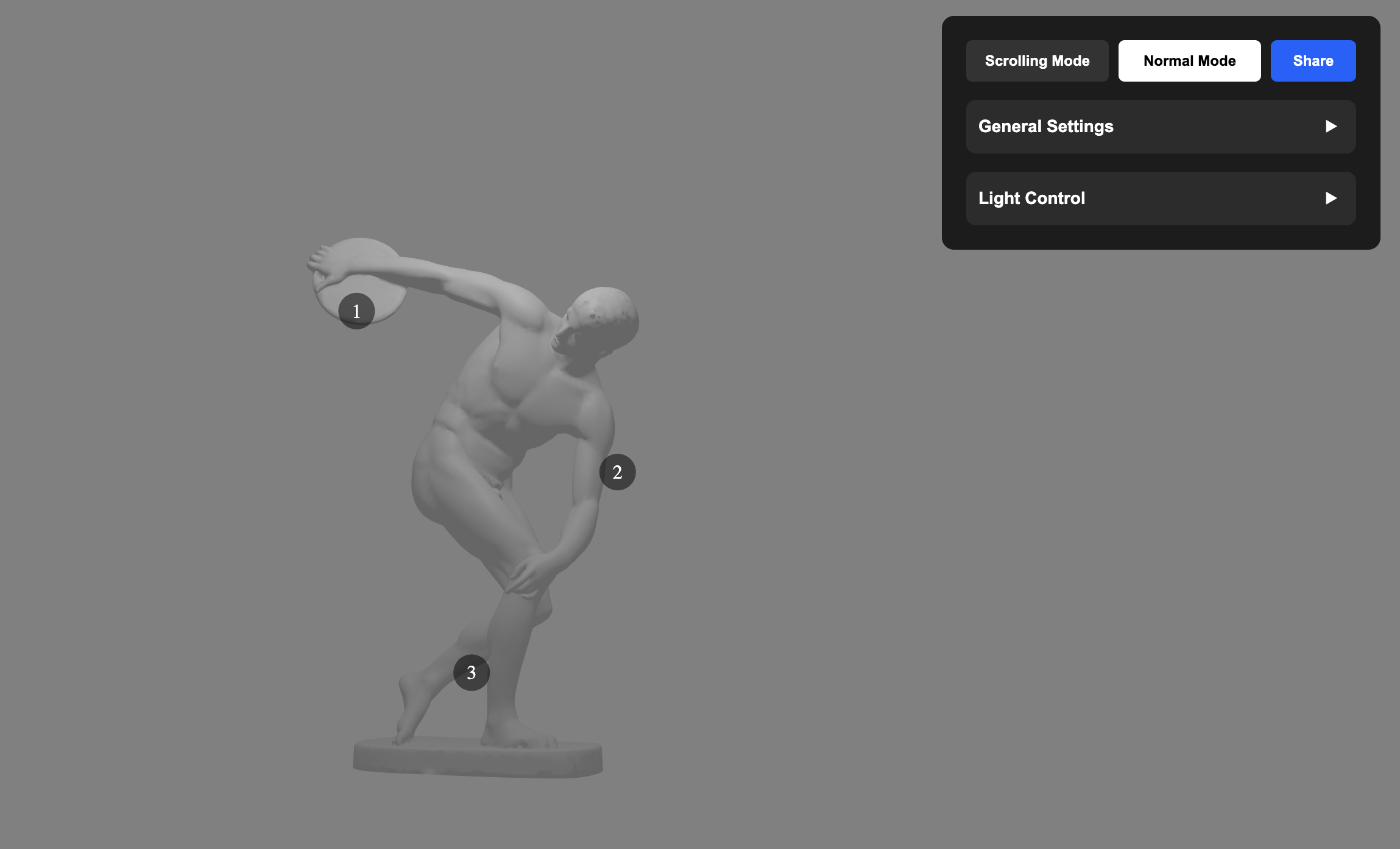3Space
Cara Cai
Advisor: Yuliya Parshina-Kottas
3Space is a web-based platform that transforms static 3D models into immersive, interactive experiences through multimedia annotations and scroll-driven storytelling. Combining spatial visualization with narrative design empowers users to create engaging educational, cultural, and design content, bridging the gap between passive 3D viewing and active, meaningful interaction accessible to all skill levels.

Project Description
3Space is a web-based platform that turns static 3D models into interactive, multimedia-rich experiences through annotation and scroll-driven storytelling. It offers two core modes: Annotation Mode, which allows users to embed text, images, video, and audio onto specific parts of a 3D model, and Storytelling Mode, which guides viewers through a curated narrative with dynamic camera transitions.
Designed to be accessible without coding, 3Space empowers educators, designers, curators, and creators to transform 3D models into immersive tools for learning, communication, and exploration. Unlike Sketchfab, which focuses on visualization, 3Space combines spatial storytelling and rich interaction in one seamless interface.
Built using Three.js and shaped by iterative user testing, the platform focuses on ease of use, engagement, and narrative clarity. 3Space reimagines how we interact with 3D content, turning objects into stories and viewers into explorers.
Technical Details
Three.js – For 3D model rendering and camera controls.
GLTFLoader / OBJLoader – Supports multiple 3D file formats (.glb, .obj, .fbx).
JavaScript + HTML/CSS – Core web interface and interaction logic.
ScrollTrigger (GSAP) – Enables scroll-based storytelling transitions.
Research/Context
3Space was born out of the growing need for richer, more interactive ways to present information in 3D environments. Traditional 3D viewers focus on passive exploration, limiting opportunities for layered interpretation or narrative depth. In contrast, fields like interactive journalism, digital archiving, and museum studies increasingly use 3D not just for visualization, but for storytelling and education.
Projects like The New York Times’ Inside the Deadly Maui Inferno and platforms like Sketchfab, Google Arts & Culture, and Mozilla Hubs show how spatial media can be combined with narrative content. However, these tools often require coding knowledge, lack structured story modes, or limit annotation features.
Through primary research, including reviewing digital exhibition tools, analyzing annotation workflows, and surveying user needs in education and cultural institutions, 3Space identifies a key gap: the absence of a unified, no-code platform that lets users both annotate and narrate directly within 3D models.
By merging multimedia annotation with guided storytelling in an intuitive web interface, 3Space builds on existing work in interaction design, digital humanities, and spatial computing, bridging static models and immersive communication.